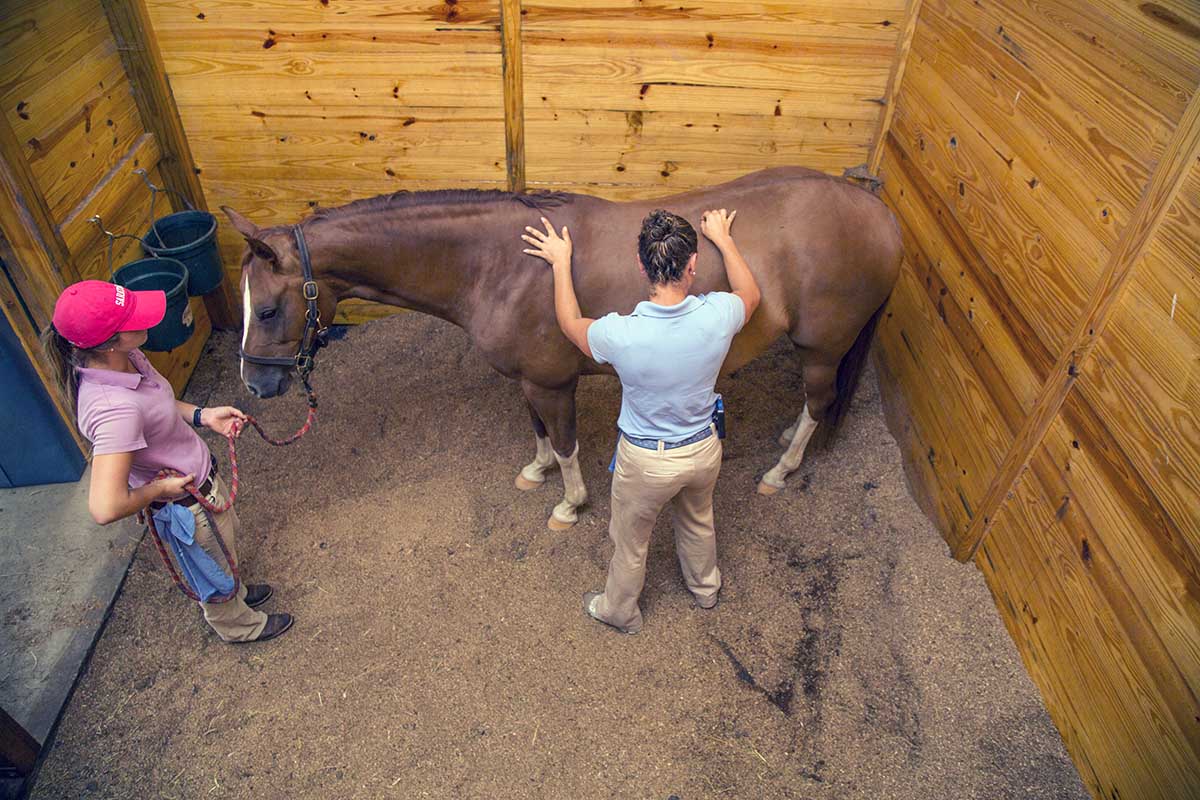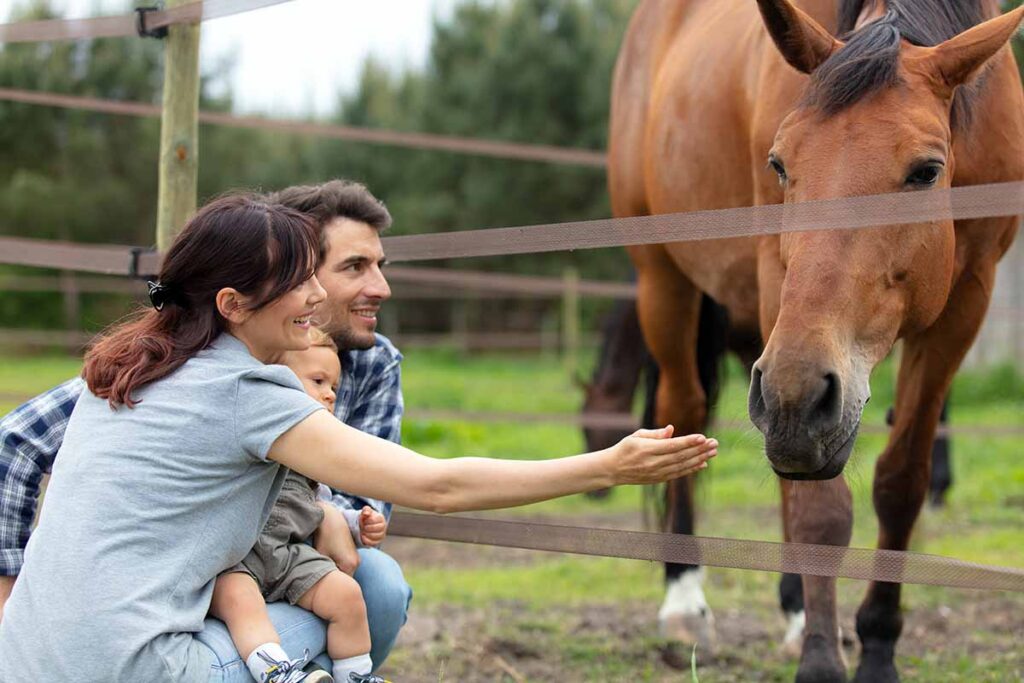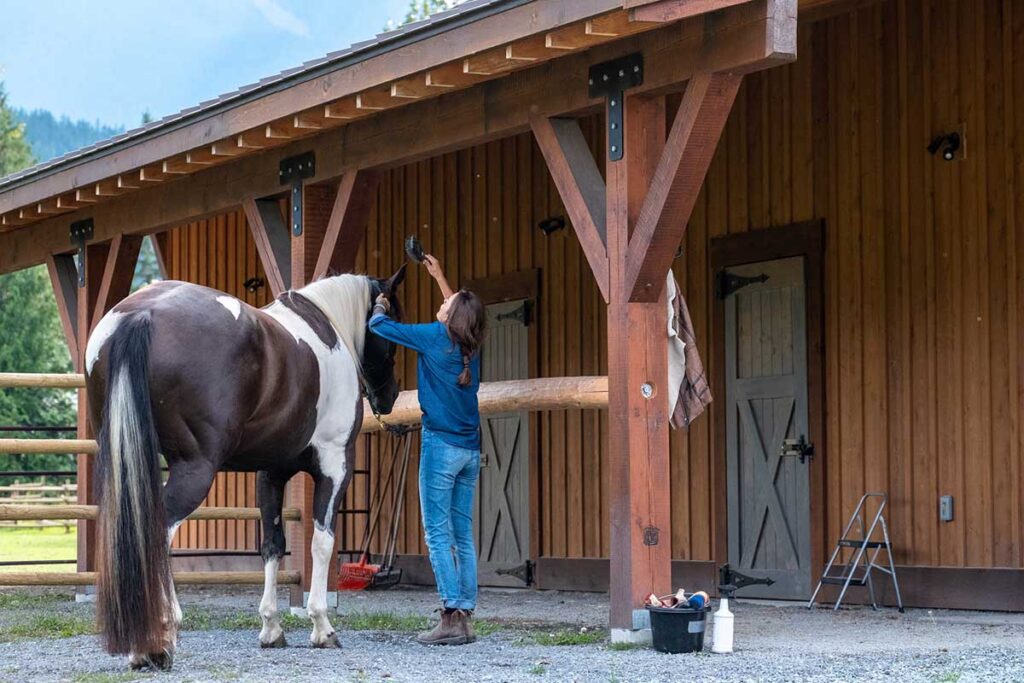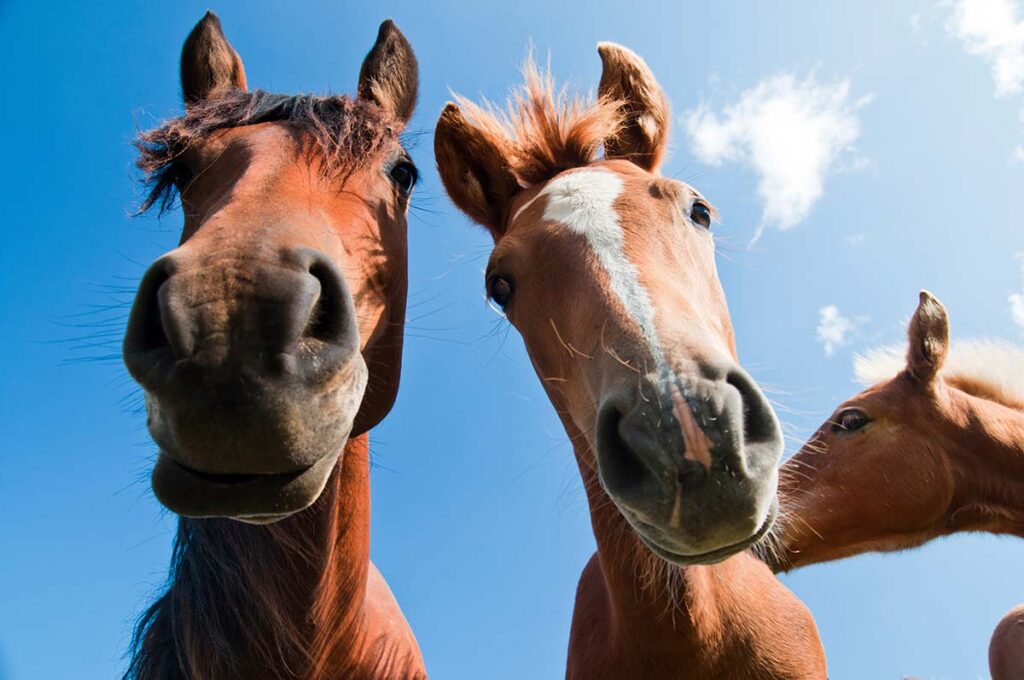You start tacking up your horse, and he pins his ears, swishes his tail, and braces his back in anticipation of the saddle. When you ride, he refuses to move forward, kicking out occasionally as you add more leg. What could be going on? These types of behavior changes when tacking up or riding are often signs your horse’s back is sore. In this article, we’ll teach you how to check your horse’s back for pain and know when it’s time to get professional help from a saddle fitter, bodyworker, or veterinarian.
Palpating for Pain
Examining your horse’s back with your hands (aka palpating) can help you find potential sore spots and monitor changes over time. The key is doing it correctly. “With the flat pads of your fingers, sweep down the back from the withers to the point of the hip, using consistent gentle pressure and following the direction of the hair,” says New-York-based equine bodyworker and saddle fitter Jenna Shipley, of Shipley Equine Services. “Sweep multiple times slowly on each side to ensure that if you get any sort of reaction, it’s repeatable.”
Watch: How To Tell if Your Horse’s Back Is Sore
Common Mistakes When Palpating Your Horse’s Back
It can be tempting to simply “dig” your fingernails sharply into your horse’s topline to see if he flinches in response. And with that technique, you bet he will! “A common mistake is using a sharp object in a fast, sweeping motion down the back or ‘pinching’ on either side of the back with the fingertips,” says Shipley. “Any notable reaction from these methods may be caused by a reflex point rather than a pain response in the muscle. It’s normal for horses to flinch or shy away from these types of strong or sharp pressures.”
Shipley points to another common palpation mistake: Moving too quickly. “In order to get feedback on where the muscle is sore, you must use slow, consistent pressure,” she says. “Here again, it is normal for muscles to brace under sudden, hard pressure, which may give you inaccurate feedback.”
What Could Be Making Your Horse’s Back Sore?
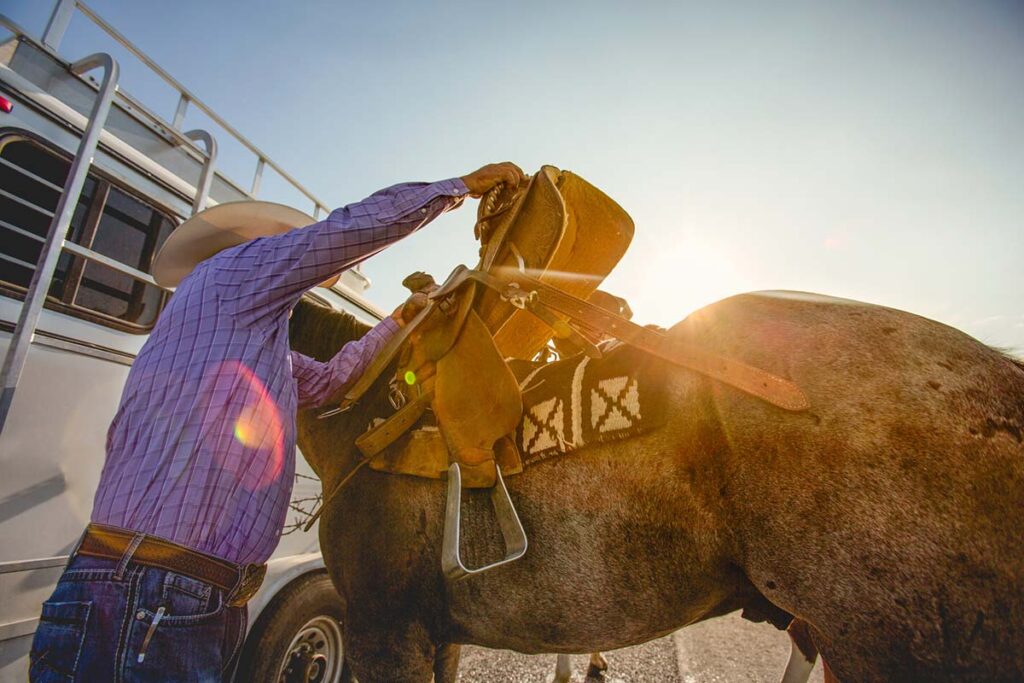
Several factors can contribute to back pain in ridden horses. The simple act of putting tack and a person on their back can easily create soreness even if you do everything right. That being said, common reasons your horse’s back might hurt include:
- Your saddle doesn’t fit.
- Your horse gets cold-backed and needs a long, gradual warm-up at the start of your ride.
- Your horse is carrying more than 20% of his body weight.
- Your horse has underlying back problems, such as kissing spines (when a horse’s vertebrae are too close together) or arthritis.
- Your horse is lame, and that lameness is causing secondary back pain.
What You Can Do to Help
“If you suspect back pain, the first step I recommend is having the tack evaluated by a professional saddle fitter,” says Shipley. “In addition, having a bodyworker work on your horse will not only help determine the severity of the discomfort but also help relieve muscular pain right away. If the back pain is severe or does not subside, it’s crucial to discontinue riding and have your veterinarian examine the horse.”
The veterinarian will likely want to perform a soundness exam to rule out lameness stemming from one or more legs and to palpate your horse’s back meticulously. Based on their findings, they might prescribe further diagnostics and/or any of the following treatments:
- A muscle-relaxing drug called methocarbamol.
- The anti-inflammatory medication Bute.
- Core-strengthening exercises and carrot stretches. Your horse’s abdominal muscles play a crucial role in supporting his topline, or the muscles over his neck and back.
- Chiropractic care and/or massage therapy.
- Joint injections of your horse’s back. Did you know the equine spine contains approximately 200 joints? That creates lots of opportunities for joint inflammation and arthritis to develop.
Final Thoughts
Knowing how to recognize equine back pain is a skill that will be equally useful to you and to the horses in your life. Your veterinarian, saddle fitter, or bodyworker will likely be happy to help you perfect your hands-on palpation techniques. These professionals can also provide valuable feedback about your horse’s topline health.
Lucile Vigouroux, MSc, holds a master’s degree in Equine Performance, Health, and Welfare from Nottingham Trent University (UK) and an equine veterinary assistant certification from AAEVT. She is a New-York-based freelance author with a passion for equine health and veterinary care. A Magnawave-certified practitioner, Lucile also runs a small equine PEMF therapy business.

